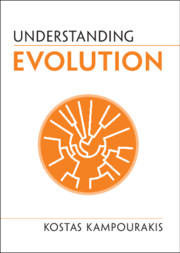Book contents
- Understanding Evolution
- Series page
- Understanding Evolution
- Copyright page
- Reviews
- Dedication
- Contents
- Foreword
- Preface: There is More to Resistance to Evolution than Religion
- Acknowledgments
- 1 The Public Acceptance of Evolution
- 2 Religious Resistance to Accepting Evolution
- 3 Conceptual Obstacles to Understanding Evolution
- 4 Charles Darwin’s Conceptual Change
- 5 Common Ancestry
- 6 Evolutionary Processes
- 7 Evolutionary Theory and the Nature of Science
- Concluding Remarks
- Summary of Common Misunderstandings
- References
- Figure Credits
- Index
5 - Common Ancestry
Published online by Cambridge University Press: 29 September 2020
- Understanding Evolution
- Series page
- Understanding Evolution
- Copyright page
- Reviews
- Dedication
- Contents
- Foreword
- Preface: There is More to Resistance to Evolution than Religion
- Acknowledgments
- 1 The Public Acceptance of Evolution
- 2 Religious Resistance to Accepting Evolution
- 3 Conceptual Obstacles to Understanding Evolution
- 4 Charles Darwin’s Conceptual Change
- 5 Common Ancestry
- 6 Evolutionary Processes
- 7 Evolutionary Theory and the Nature of Science
- Concluding Remarks
- Summary of Common Misunderstandings
- References
- Figure Credits
- Index
Summary
Evolutionary theory suggests that all species, both extinct and extant ones, have evolved through natural processes and are more or less related. There must have been one or a few universal common ancestor(s) of all species because organisms share some crucial characteristics: (1) they consist of (one or more) cells, or depend on cells for their reproduction; (2) they exhibit the characteristic properties of life (metabolism, reproduction, homeostasis, etc.), which are the outcome of intra- and/or intercellular processes; (3) proteins have central roles in these processes; and (4) these proteins are synthesized inside cells on the basis of specific DNA sequences and their interaction with their cellular contexts. These common characteristics are fundamental to life on Earth, but how could they have emerged? Creationists would argue that they are products of design; these were characteristics of an archetypal plan, on the basis of which living organisms were formed. Evolutionists would reply that no competent designer would design something with fundamental problems or imperfections (remember the comparison between dolphins and sharks in Chapter 3). But couldn’t it be the case that the aforementioned characteristics (1–4), which are common in all organisms and fundamental to life on Earth, are the products of a designer who created the molecular and cellular foundations of life and then let it evolve?
- Type
- Chapter
- Information
- Understanding Evolution , pp. 90 - 120Publisher: Cambridge University PressPrint publication year: 2020



